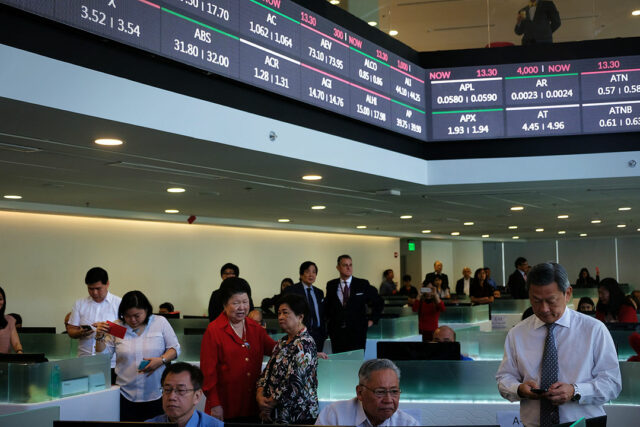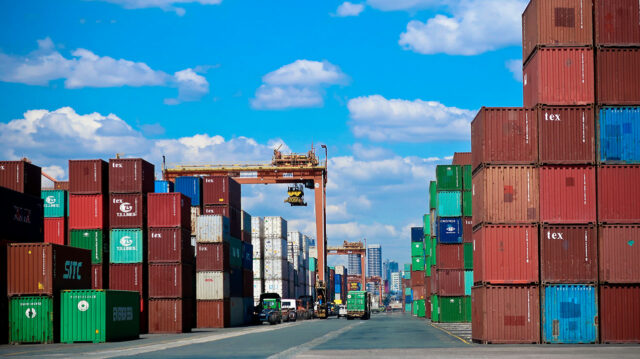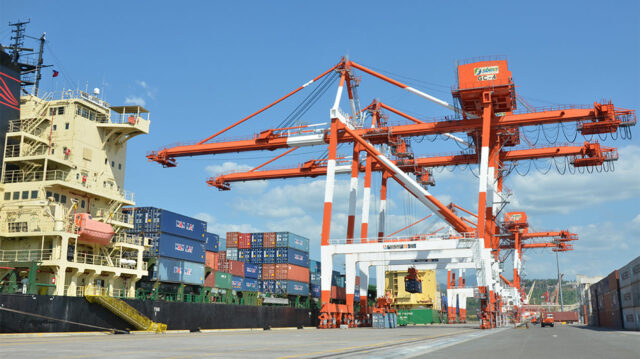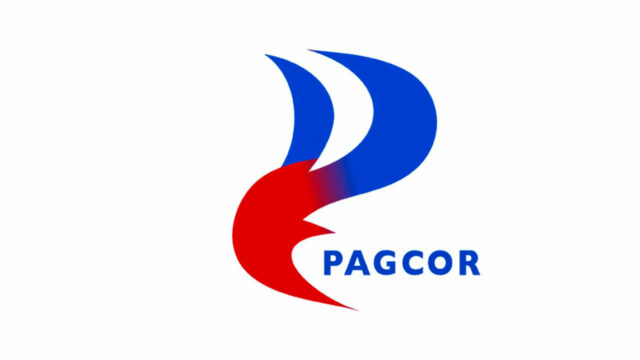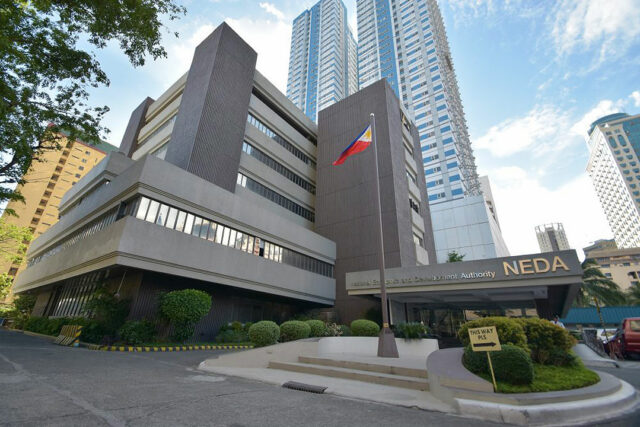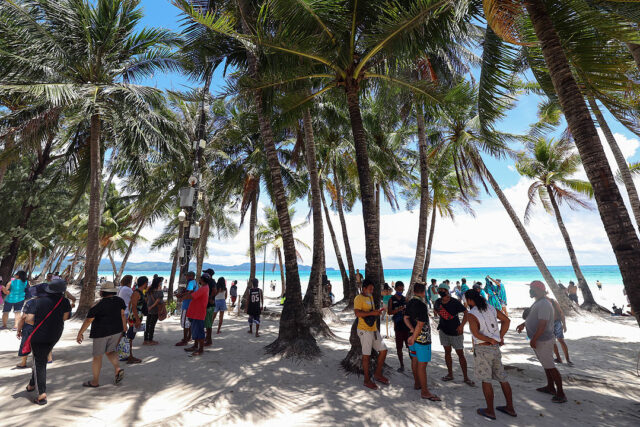PHILIPPINE President Ferdinand R. Marcos, Jr. on Sunday condemned the Chinese Air Force’s “illegal and reckless” attacks on a Philippine military plane patrolling over a traditional fishing ground in the South China Sea that is within Manila’s exclusive economic zone (EEZ).
The Philippine Air Force (PAF) aircraft was undertaking a routine maritime security operation in “Philippine sovereign airspace,” the Philippine president palace said in a statement after the military reported that Chinese fighter jets had fired flares into the path of its plane patrolling over Scarborough Shoal.
“The actions of the People’s Liberation Army-Air Force aircraft were unjustified, illegal and reckless,” the palace said. Mr. Marcos “stands by our brave men and women of the Armed Forces of the Philippines, especially the PAF.”
“We have hardly started to calm the waters, and it is already worrying that there could be instability in our airspace,” it said. “The Philippines will always remain committed to proper diplomacy and peaceful means of resolving disputes.”
It urged China to “demonstrate that it is fully capable of responsible action, both in the seas and in the skies.”
The Philippine military on Saturday said China’s air force conducted “dangerous and provocative actions” on Thursday against one of its planes patrolling over Scarborough, a traditional fishing ground in the South China Sea that China has controlled since 2012.
Military chief Romeo S. Brawner, Jr. said Chinese fighter jets, which fired flares into the path of the PAF plane, “endangered the lives of our personnel undertaking maritime security operations.”
The Chinese fighter jets “interfered” with lawful flight operations and “contravened” international rules on navigation safety, he said in a statement.
The Philippine Air Force pilot and crew were unharmed and safely returned to an air base in northern Philippines.
Philippine Senate President Pro-Tempore Jose “Jinggoy” P. Estrada, Jr. said the Chinese Air Force acts violated international law, calling it “reckless and provocative.”
“This recent incident is a blatant violation of international aviation safety standards and the rights of all nations to carry out lawful maritime operations,” he said in a statement.
“We will not be intimidated,” Mr. Estrada said. “We will continue to defend our sovereignty with resolve and determination while remaining committed to upholding the rule of law and promoting peace in the region.”
He urged the Chinese government to stop its aggression in the waterway, saying Beijing should follow international law.
The Chinese side on Saturday said it “organized naval and air forces to lawfully” drive away the Philippine plane after “repeated warnings,” describing its operations as “professional, standard, legitimate and legal.”
“We warn the Philippine side to immediately stop its infringement, provocation, distortion and hype,” the Chinese People’s Liberation Army’s Southern Theater Command said in a statement, accusing the Philippine military of “disturbing” its activities in the area.
Confrontations between the two nations in the South China Sea have mostly involved their navy and coast guard vessels.
The Philippine military said it had reported the incident to the Department of Foreign Affairs and other agencies.
“We reaffirm our commitment to exercise our rights in accordance with international law, particularly UNCLOS (United Nations Convention on the Law of the Sea) and the Chicago convention.”
China has controlled Scarborough, which falls within the Philippines’ exclusive economic zone but is also claimed by several other countries, in 2012 after maintaining constant coast guard presence there, according to the Asia Maritime Transparency Initiative.
It is 240 kilometers west of the main Philippine island of Luzon and nearly 900 kilometers from Hainan, the nearest major Chinese landmass.
China claims almost the entire South China Sea, including parts claimed by the Philippines, Brunei, Malaysia, Taiwan and Vietnam.
‘SAFETY OF NAVIGATION’
The Chinese Air Force’s acts happened a day after Beijing conducted a combat patrol near Scarborough Shoal to test its troops’ “strike capabilities.”
Mr. Marcos has pursued closer security ties with the United States and other Indo-Pacific powers amid China’s increasing expansionism.
The naval and air force units of the Philippines, US, Canada and Australia held war games within the Philippines’ EEZ on Aug. 7 and 8, which the countries said were in line with international law and the “safety of navigation and the rights and interests of other states.”
The four nations reaffirmed a 2016 arbitral award that voided China’s expansive claims in the South China Sea as a “final and legally binding decision,” and cited their commitment to uphold a “rules-based” order.
The drills came days after the Philippine military said at least 122 Chinese ships including a research vessel and the world’s largest coast guard ship had been operating in Philippine waters from July 30 to Aug. 4, up from 104 a week earlier.
The country recently held two separate bilateral joint sails with the US and Japan. The three countries along with Australia held similar sails last year.
In June, Canada joined a maritime cooperative activity with the Philippines, the US and Japan, which sealed a reciprocal access agreement with Manila in July. The Philippine Senate has yet to approve the deal.
Canada, which has given the Philippines access to its dark vessel detection technology, is also eyeing a military deal with Manila.
Philippine Navy spokesman for the West Philippine Sea Roy Vincent T. Trinidad on Aug. 6 said China has reclaimed 3,000 hectares within the Philippine EEZ. He said Beijing has transformed Subi, Mischief and Johnson reefs into major military bases.
The Philippine fishery has inspected China-occupied Subi Reef aerially, detecting several high-rise buildings and an airstrip.
Subi, which is just 12 nautical miles from the Philippine-occupied Thitu Island, is one of the three largest man-made islands built by China within the Philippine EEZ. The others are Fiery Cross Reef and Mischief Reef. — Kyle Aristophere T. Atienza and John Victor D. Ordoñez

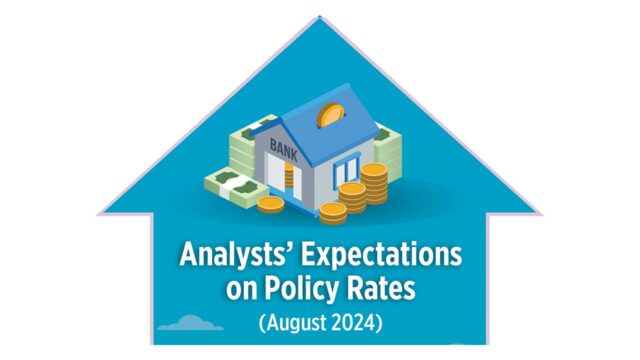

![PHL-flag-peso-currency-1[BW FILE PHOTO]](https://www.bworldonline.com/wp-content/uploads/2024/04/PHL-flag-peso-currency-1BW-FILE-PHOTO-640x427.jpeg)
